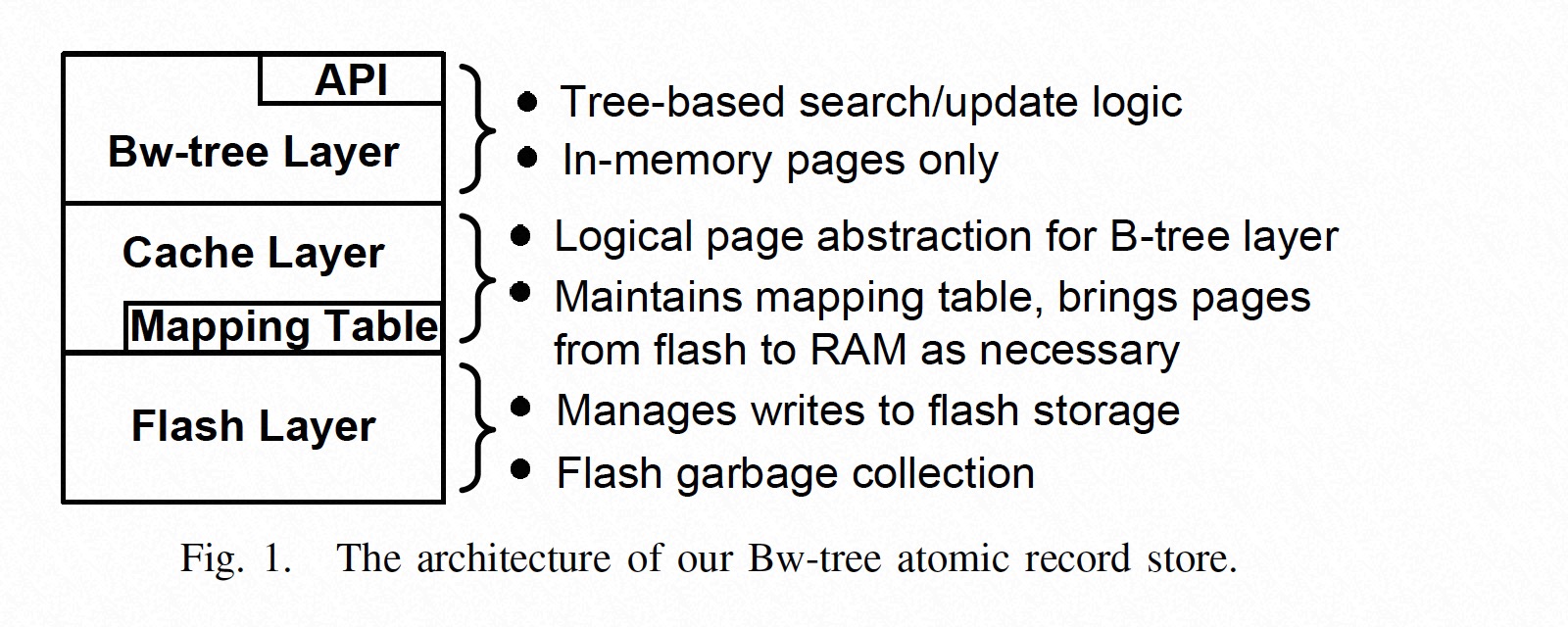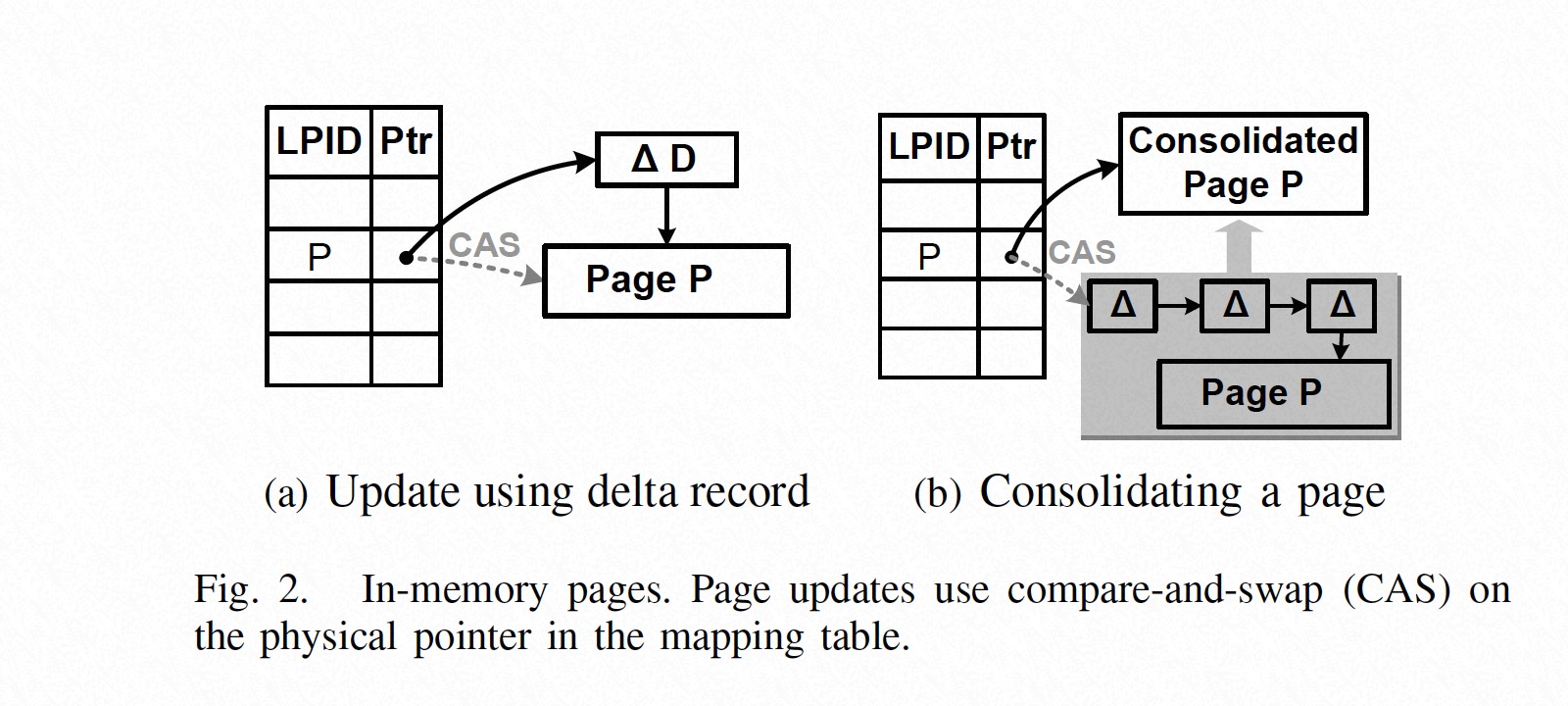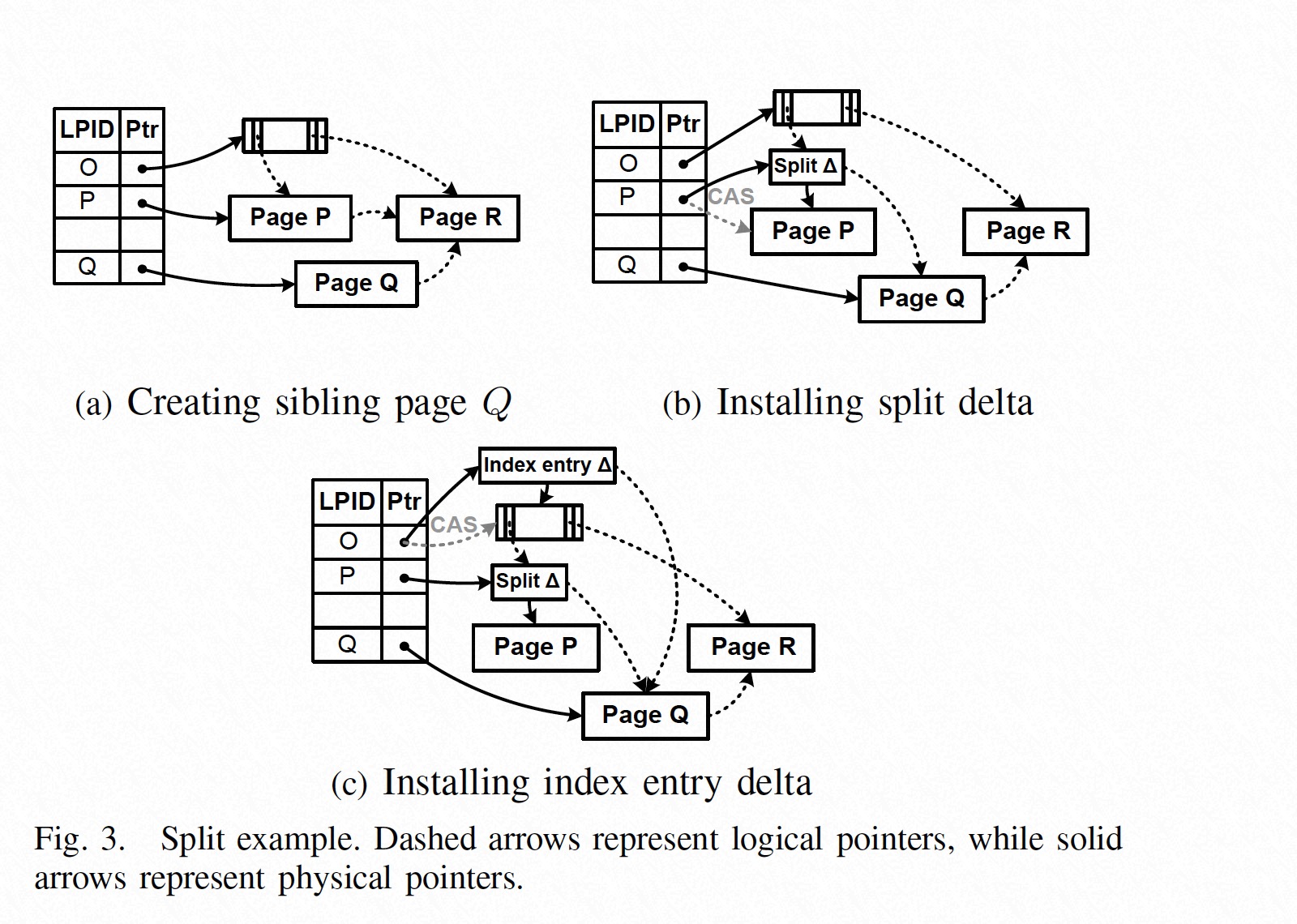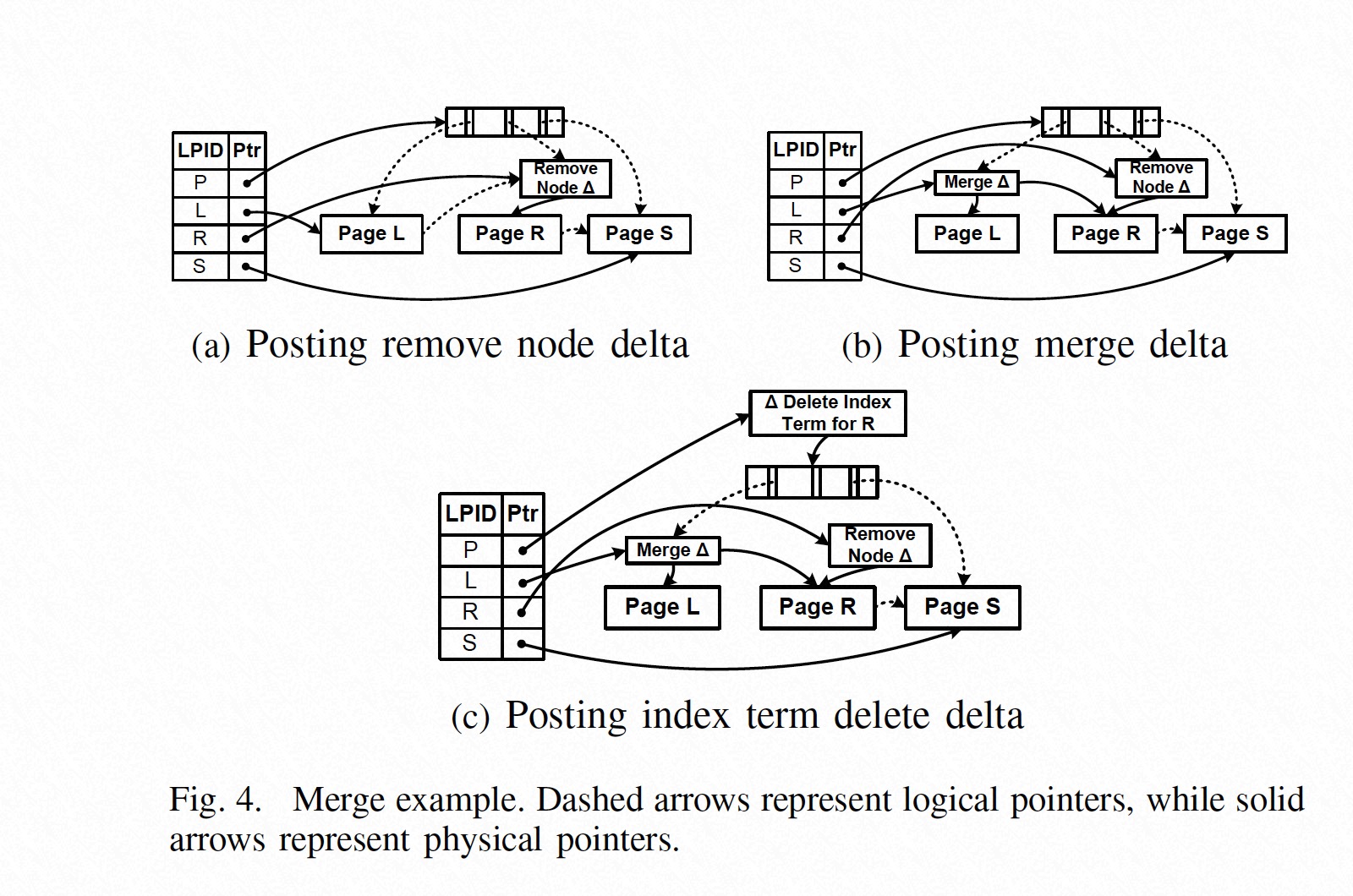The Bw-Tree: A B-tree for New Hardware Platforms
ICDE 2013
https://ieeexplore.ieee.org/document/6544834
数据库系统大多还在使用 70 年代针对硬盘和单核 CPU 设计的架构,然而新的硬件平台大多使用了 multi-core cpu 和 ssd 存储设备,如何榨取新硬件平台的极致性能是一个重要的研究话题。Bw-tree 就是这样一种为新硬件平台设计的索引结构。
Architecture

Bw-tree 在很多方面都与经典的 B+ tree 非常相似,它提供 O(logn) 的点查及线性的范围查询,上图中的 Bw-tree Layer 提供了增删改查的接口,同时与中间的 Cache Layer 进行交互。
Cache Layer 作为内存数据库的缓存,与下层的 LSS (Log-structured store) 进行数据交换以保证系统的一致性的同时,还维护了一个 Bw-tree 特有的 Mapping Table 结构来将逻辑页号(Logic Page Id, PID)映射到具体的物理内存地址或 SSD 偏移。
The mapping table severs the connection between physical location and inter-node links. This enables the physical location of a Bw-tree node to change on every update and every time a page is written to stable storage, without requiring that the location change be propagated to the root of the tree.
In-Memory Latch Free Pages
Bw-tree 的节点中存储的信息与 B+ tree 很相似,非叶子节点存储了(seperator key, pointer),叶节点则存储了(key, record),除此之外,页面还存储了 1) low key 2) high key 3) 指向右兄弟的 side link key。
Bw-tree 不同于 B+ tree 的设计在于:
- 页面中存储的 pointer 是逻辑页面(PID),通过 mapping table 进行转换,且页面大小不固定
- 页面不允许 in-place update,需通过将 delta record prepend 到页面来进行修改

一个更新操作首先需要创建一个 delta record,该记录指向该页面的当前地址,然后通过 CAS 操作将 mapping table 的物理地址修改为 delta record 的地址,CAS 能使得只有一个更新操作成功。在多次更新操作之后,一个物理页面由一个 base page 和一条 delta chain 构成。delta chain 过长会影响查询性能,因此需要在达到一定阈值之后进行 consolidation,即创建一个 re-organized 的 base page 并通过 CAS 将 mapping table 中的指针改为新 base page 的地址。
Structure Modifications
通 B+ tree 一样,当页面大于或小于一定阈值时,Bw-tree 也需要对节点进行 split 或 merge 操作。Bw-tree 的 Split 和 Merge 操作同样使用了 CAS 操作。
Node Split 分为 Child Split 和 Parent Update 两步,Node Merge 分为 Marking for Delete、Merging Children 及 Parent Update 三步,其图示如下,具体描述论文里很清楚,这里不再描述。
Node Split

Node Merge
